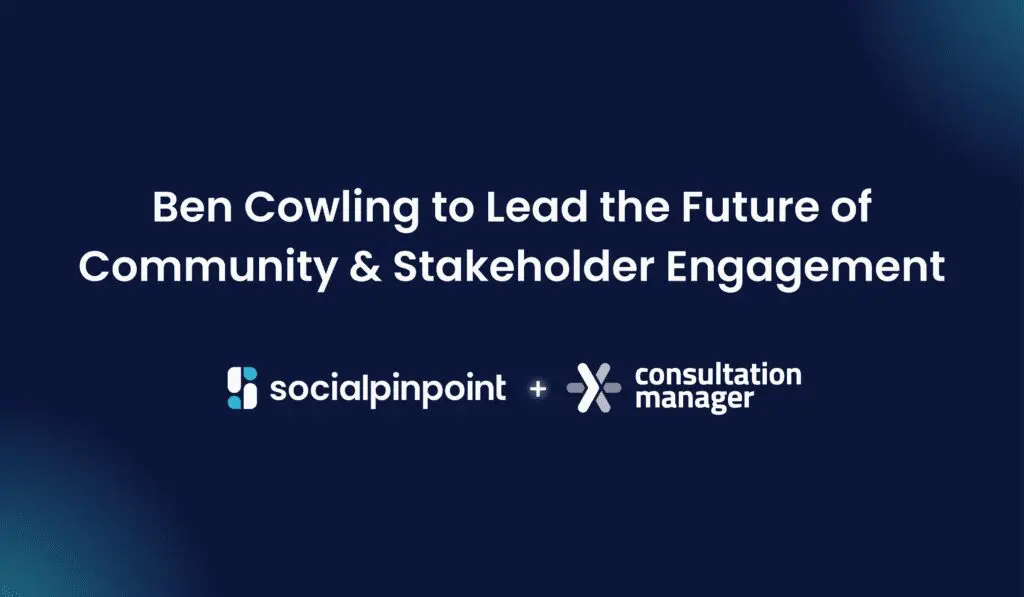The diversity of voices in our communities can shape innovative, future-focused solutions for today’s biggest challenges. However, if you really want to spark change, everyone on your team needs to understand when and how to promote inclusivity.
The need for inclusive community engagement is clear. When we include people from all walks of life in community conversations, we get to hear from diverse voices and illuminate blind spots in our own beliefs and thought patterns. If we can create safe spaces where everyone feels heard, we might see a problem in a new light or consider an alternative course of action that can deliver far better outcomes for the entire community.
There are so many opportunities for community engagement experts to make connections throughout the social system and if you can align your team on these five key intervention points, then you’ll be ready to foster inclusion in the moments that matter.
1. Readiness
Your organization needs to be ready to explore the community’s hopes, dreams, and frustrations. So it’s important to build strong partnerships with key stakeholders from diverse and representative community groups. You can also use and maintain helpful datasets on population groups that you engage with regularly, and store shared records of community engagement to encourage ongoing conversations. Creating a shared set of reporting templates, conducting workforce skills assessments, and building team capabilities will also improve your preparedness to reach and understand groups that may have traditionally been excluded.
2. Design
At the beginning of any authentic engagement process, it’s important to have an open mind without predetermined conclusions or expected outcomes. At this early stage, your team should clearly identify the needs, preferences, timing, and process of engagement for all target groups. You also need to establish budgets for any incentives and compensation for the cost of participation (especially if your engagement requires a significant time investment from participants).
Be mindful that your engagement methods should allow people to contribute in a variety of ways at a time that works for them. Hybrid approaches to community engagement, which include online and offline avenues allow you to tailor your approach based on all of the possible participation barriers. Also design your conversations in ways that avoid bias and leading questions, and build feedback loops into your engagement strategy so that you can track your effectiveness. You should also be trying to build ongoing relationships with your participants, so make sure that you set up transparent avenues for communicating how their input has been used.
3. Planning
If you want to reach as many people as possible, it’s important to think through your launch strategy carefully. Create a structured plan as to how will you announce and promote your engagement using a mix of online and offline channels, how you could target different groups with tailored media and marketing campaigns, and where might you place offline ads such as posters and flyers. The more widespread your communications the better and you can also partner with local community leaders to spread the word. If residents see that your project is supported by a respected community member, they are more likely to participate.
4. Delivery
Seek to engage in the places and spaces that are being used and give marginalized and excluded communities the proper tools, means, and knowledge to engage. Make sure that your messaging clearly explains how the outcomes of your project will affect participants and ensure that your engagement methods are setting your community up for success.
Resources need to be in a clear, simple, and understandable format. If you are using a digital platform, it’s important to ensure that you are compliant with the latest Web Content Accessibility Guidelines to make your web content more accessible across all devices and for all people. This ensures that you are getting the fine details right, like using color contrast to make text easy to read and putting alt attributes on your images for blind and partially sighted people.
Aim for clarity over creativity. Simple designs and layouts are often the most user-friendly and using simple language improves access. Also, provide a physical space in public areas like libraries or town halls so that people without internet access can participate. Avoid any language that eludes to stereotypes and mention demographics only when they are relevant.
5. Review
It’s important for your team to follow through on its commitments and share the outcomes of your engagement with the community. If people feel like you had a genuine interest in their input and were clear about the scope of influence they had on the final decision, they will continue to engage. You should also reflect on the depth of engagement that you achieved and share the learnings with your team. If you can continuously improve your ability to anticipate and address inequities, you won’t force the community to advocate for themselves and can build long-term, mutual trust.
Better Discussions, Decisions, and Outcomes
Inclusivity is a constant journey that requires clear intent and an open mind. While there is no one size fits all approach, this framework can empower your team to take action and ask the right questions at every opportunity.












